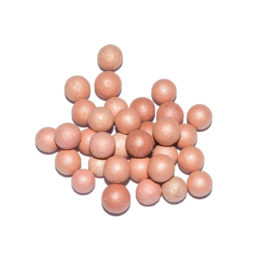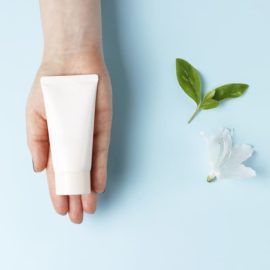In the past few years, various world crisis have made us become more aware of the fact that our future depends on taking a different, more sustainable approach to nature and its resources. Today, consumers are more attentive and responsible than before. They care about the ingredients used for the production of cosmetics or, alternatively, they aim to get informed about what the products they use contain. They are much more oriented than in the past, looking for specific characteristics that guarantee both good performance and at the same time, eco-friendly, sustainable ingredients to benefit the environment.
Their increased awareness is reflected in the widespread consumption of cosmetics composed of eco-sustainable ingredients. The public is aware of the fact that their behaviour will have repercussions on their physical wellbeing. They are also conscious about the importance of prevention and the direct impact on the environment their choices may have. “Green chemistry” captures the widespread need to safeguard human health, animal welfare and the quality of the environment, designing eco-friendly products with sustainable ingredients, which minimize the use and production of ‘at risk’ substances. Biotechnologies are increasingly used in the cosmetic and personal care sectors for the production of innovative and safe molecules through highly technological processes.
Content
Procedure of obtention of the suspension stem cell culture
The active ingredients are obtained primarily with the use of plant stem cells that give rise to specialized cells of the plant from which to extract active substances with a controllable degree of purity and quality.
The procedure entails a number of steps, as follows: the selection and cutting of the plant in a sterile environment; the growth of the selected parts, firstly in solid soil, and in a later stage in semi-liquid soil until it becomes soluble. Subsequently, small fragments are transferred to a constantly shaken liquid environment until it becomes suspension culture.
Due to the stem cells’ capacity for self-renewal, this culture will be an infinite source of active molecules. Therefore, biotechnology enables the natural environment of each of the botanical sources to obtain sustainable active ingredients through an eco-responsible method of obtention. The resulting ingredients will also be non-GMO as well as free of phytosanitary products.
The European Commission, as part of the Horizon 2020 program, has also decided to fund research on vegetable stem cells for the production of safe and sustainable cosmetics. Therefore, a revolution is on the horizon in the way in which cosmetic ingredients are produced and offered to customers who are increasingly attentive to quality and environment. A more sustainable approach to production will be applied on an industrial scale.
In addition, the production of these plant-based substances increases its environmental sustainability and health benefits for the consumer. The cosmetic industry is in continuous evolution and as a result, formulations of cosmetics change, adapting to the needs of the market and trying to keep up with what consumers look for in products. However, there are some constant factors in the cosmetic industry: each of us wants to purchase cosmetics that are effective and increase our overall wellbeing. Since research has confirmed that plantstem cells are can be both effective and beneficial for our planet’s health, the cosmetic industry is not going to waste its time and is now using them to formulate with stem cell-based ingredients for their customers. Research is constantly evolving and new cosmetic ingredients are always studied to cater to the buyer’s needs.
Altheostem™: sustainably sourced from plant stem cells
This same process is used in the production of Altheostem™, obtained from the petals of the Althea rosea, which then was proved to selectively eliminate the senescent skin cells.
Vegetable stem cell technology has allowed producers of cosmetic products to reproduce in lab the secretome rich in growth factors which is necessary for the optimal functioning of our skin. How well our skin functions and looks like depends on good intercellular communication, which is altered with age and is one of the factors associated with ageing. This secretome allows fibroblasts to increase their production of elastin and collagen and their migration and proliferation. Multiple in vitro tests confirmed that cellular communication among skin stem cells and fibroblasts resulted in an increase in the production of collagen and elastin, which helps the skin look younger and more compact.
Ultimately, given the increased sensitivity to environmental issues and the effectiveness of the products, it is essential to communicate the advantages (for customers and for our Earth) of the use of vegetable stem cells, through, for example, the Provitalks podcast of Provital.
No comments yet
There are no comments on this post yet.





Leave a comment